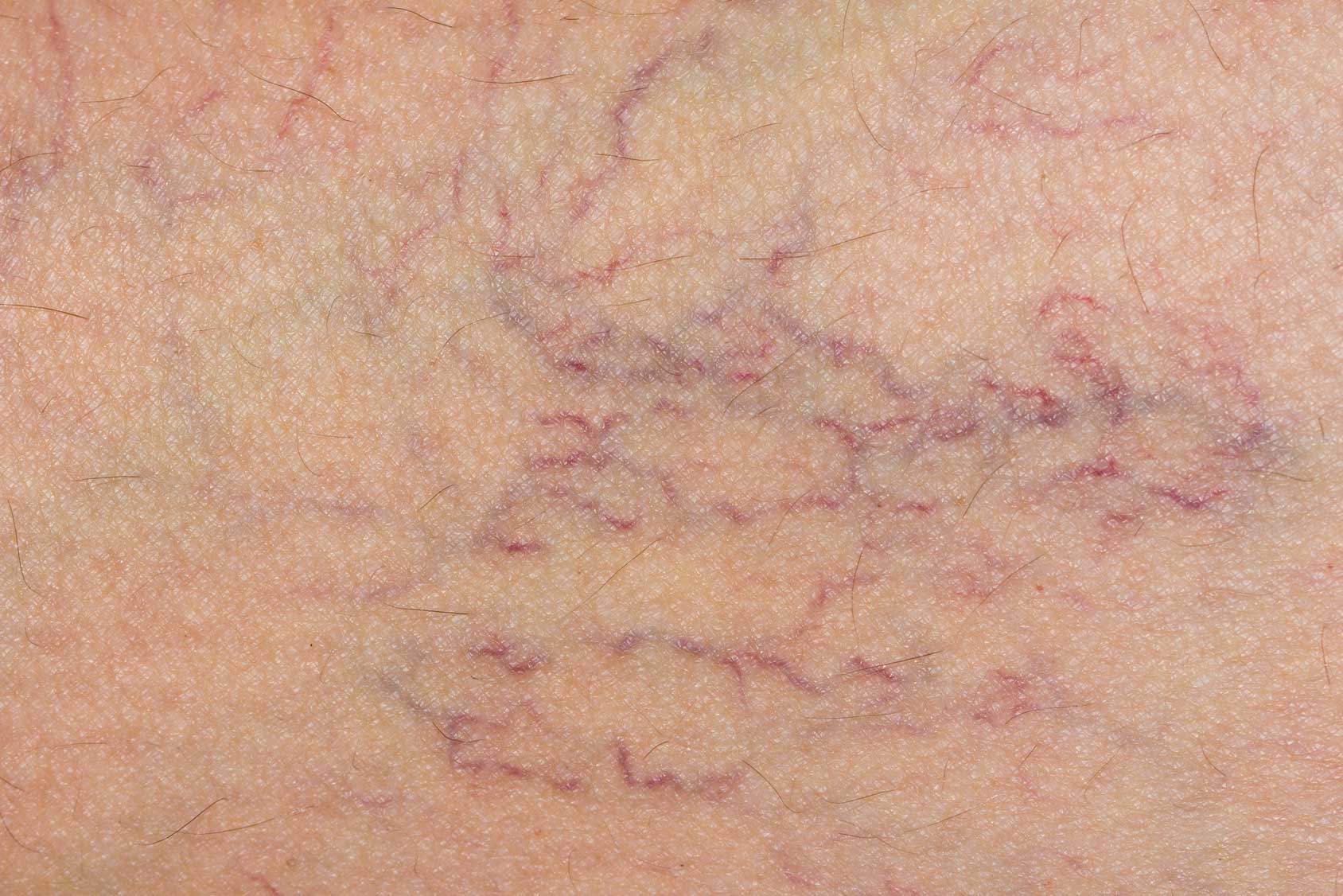What Are Spider Veins?

Spider veins are small enlarged blood vessels near the surface of the skin (or mucous membranes). Generally, spider veins measure between 0.5 and 1 millimeter in diameter & may look like tree branches or spider webs.
Though spider veins can develop anywhere on the body but commonly problematic on the face, cheeks, chin and especially around the nose. Spider veins treatments are also a common complaint on legs, chest, & breast especially after pregnancy and breastfeeding & after breast transplants.
Spider veins are the most common location for which patients visit us at Boston Vein Care. They can be found anywhere in the legs but more often on inner thigh and around the ankles.
Spider veins usually look-alike as one shape among the following three!
1. It can appear like a web shape with a bunch of veins spiralling outward from a focal point.
2. It may be like a branched pattern, related to branches of a tree.
3. Spider veins can be founded in linear shape, single thin line down the leg.
WHAT ARE COSMETIC SPIDER VEINS
• Generally no associated symptoms.
• Patients simply don’t like them.
• Can be successfully treated for most of the patients.
• Most commonly treated with sclerotherapy on legs or laser treatments on face.
• Not covered by insurance due to lack of vein treatment medical necessity criteria
CAUSES OF COSMETIC SPIDER VEINS
• Family History is a very important and most common determinant if a person is going to develop spider veins or not.
• Aging results in various skin changes including thining of skin, thinning of subcutaneous fat, breakdown of collagen and elastin fibers. This process result in development or prominence of existing spider veins.
• Hormonal Influences for example associated with puberty, pregnancy and menopause is associated with significant hormonal changes and can result in prominent spider veins.
• Sun Damage enhances the skin aging process and can show spider veins which otherwise could have been masked by healthy skin.
Spider Veins with Underlying Diseases
• Generally associated with symptoms.
• Affecting patients quality of life.
• Need to be investigated for underlying venous insufficiency or leaky veins.
• Usually, require larger vein treated with sclerotherapy or laser treatments.
• These spider vein treatment may be covered by insurance.
CAUSES OF MEDICAL SPIDER VEINS
Venous Insufficiency: There are one way valves in veins in human which help to keep the flow of blood in veins unidirectional, towards the heart. Venous insufficiency is a condition in which the valves fail to work normally or walls of veins dilated making valves to close normally. End result is flow of blood in abnormal direction towards ankles in legs.
Family History: Patients with family history of varicose and spider veins are higher risk for the development of spider veins.
Sedentary Lifestyle: Physical activity encourages blood flow in the veins. Patients with sedentary lifestyle at an increased risk for spider and varicose veins development.
Multiple Pregnancy: More than two pregnancies are considered as multiple pregnancies. Pregnancy increases not only blood volume during state of pregnancy but also due to gravid uterus there is a lot of back pressure in leg veins. For that reason, it is common to see women developing or deteriorating venous appearance during pregnancy.
Obesity: Excess body weight weakens and puts undue pressure on the leg veins, giving way to spider veins. We suggest strongly our patients to lose weight and increase exercise which improves both venous and arterial circulation.
High Risk Professions: Certain professions which involve working in close environment without walking like restaurant chefs, cash counter workers and pneumatic drill workers are increased risk of venous disease and spider and varicose veins development.
DO I HAVE SPIDER VEINS?
Many times patients can diagnose rightly that they have spider veins but sometimes patient come in thinking they have spider veins, when in real sense they have varicose veins and sometimes only skin freckle. For vein doctor, it is also important to make sure patients does not have other medical conditions like discoloration and bruising due to low platelet counts or other blood disorders. We also see sometimes inflammation of capillaries called capillaritis which may be associated with other autoimmune conditions.
For that reason, it is important to see a vein doctor who specializes in vein and vascular disease to find out if spider veins are of pure cosmetic nature or may need investigations before embarking on treatments. Patients with symptoms or clinical findings suggestive of underlying conditions are considered medical patients and their investigations and treatment may be covered by their health insurances.
WHAT ARE SPIDER VEIN TREATMENTS?
Spider veins treatment needs to be tailored to individual patient. First question which your vein doctor will have to answer is if patient is has cosmetic spider veins or there could be underlying medical venous disease. Once decision is made that patients concerns are only cosmetic there are two most common treatment modalities
• Sclerotherapy
• Laser Spider Vein Removal
Both treatments are effective but has pros and cons. Sclerotherapy is most effective in leg veins especially slightly larger spider veins and feeder veins, reticular veins and varicose veins. Where as laser spider vein is best suited for smaller veins especially on face and in Caucasian population.
At Boston Vein Care we have expertise in both treatment modalities and can pick the best option for our patients. Please visit above links above to know more about these treatments.
